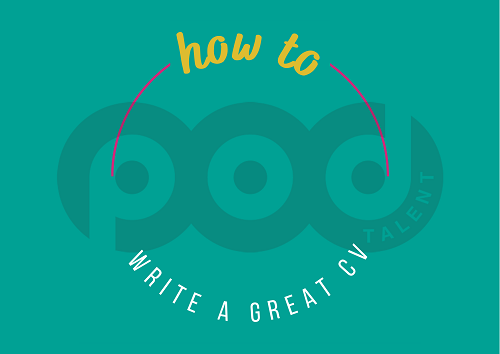How to write a CV
Nobody likes writing their CV. Well not many people do anyway. It’s difficult, time consuming and requires some serious thought. You must recall your old work experiences, some of which are good memories, some of which are bad and some you will really struggle to remember!
As a result, we think everyone could do with some help, but not everyone has access to an expert. You can use this section as your sounding board. We hope it will help you think about how best to represent yourself on paper and ease the pain of writing your CV.
First things first, get in the right frame of mind.
This is going to take some time, don’t try and rush your CV. Treat it like an important piece of work and lock yourself away in a quiet place with enough time to dedicate to it. Before you start, you can also download a useful template here
How to structure a CV:
Ok… This is the hard part. Let’s work through putting this together:
1. Firstly, you’ll need your name and contact details at the top of a CV, include your address (or location i.e. Kings Cross, London), your mobile number and your email address
2. Then you should open with a summary, a few punchy bullet points to engage the reader immediately including:
- Summary of your experience i.e. 5 years’ experience in FMCG procurement across both direct and indirect category procurement covering HR, Marketing, Food Ingredients and Logistics across both the UK and Europe.
- Specific skills i.e. experience using SAP and Ariba software and fluent in English and French
- Education or relevant qualifications i.e. Masters’ degree in Supply Chain from Cranfield University
- Summary of an achievement i.e. Delivered savings of £5m during 2018 through strategic redesign of Food ingredient category plan across EMEA
- Another achievement if possible, i.e. completed Kraft Heinz’s graduate scheme in 2012 and was promoted twice in the three years following
- A summary of your career aspirations i.e. specifically interested in a packaging category management role in a business which values sustainable procurement solutions
3. Next, work experience:
- Work in reverse chronological order, your most recent role should be top
- List your employer, dates of employment (month/year) and job title
- If the business you worked for may not be well known, you could include a quick summary of the business and what they do under this
- Next, list your achievements for this role, keep it to 3-4 bullet points
- Achievements need to be tangible i.e. “delivered £5m in savings through a redesign of UK warehouse networks”
- Then, list your responsibilities, again keep this to 3-4 bullet points and keep them short i.e. “Managing a team of 5 transport planners, responsible for primary distribution across the UK network”
4. Up next is Education and Training, list your qualifications, institute and grades
5. Lastly, list additional information you think are important such as:
- Languages
- IT skills/systems experience
- Interests (if you want to)
That’s all folks, you have a first draft of a CV!
Some useful dos and don’ts for CV writing:
- DO get someone to proof-read your CV – grammatical and spelling errors don’t land well with potential employers
- DO make sure your CV is aesthetically pleasing. It should be easy to read and flow well. Don’t use random fonts (or fonts that are too small or too large), colours or images, it’s unnecessary and sometimes makes a CV harder to navigate
- DO make sure you haven’t left someone else’s edits, notes or tracked changes in your document.
- DO have a professional email address, something related to your name or similar. itsbritneybitch@hotmail.com doesn’t look great to a potential new employer (and yes, that is a similar version of a real email address we’ve seen).
- DON’T lie. There’s no need to cover up gaps in employment or to make changes to dates of employment etc. Honesty is always the best policy.
- DON’T waffle on. CV sentences should be short and snappy and avoid paragraphs of information. Also, don’t fall into the trap of using a tiny font so you can write more. A CV is a short summary designed to sell your experience; we don’t need a full biography!
- DON’T have a photo, unless you’re sure it’s a good one. Most people look a bit scary doing their “business face” whilst equally a photo of you drunk in the pub isn’t ideal either. Photos on CVs aren’t necessary so it’s easier not to have one.
- DON’T include references on your CV, if someone needs them they will ask for them and you don’t want to publicise someone’s contact details unnecessarily

